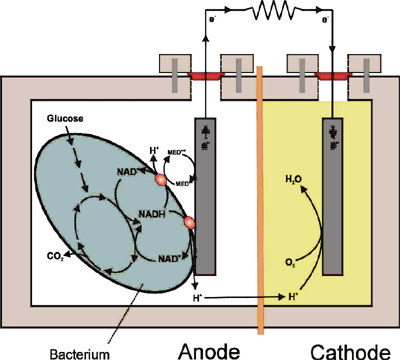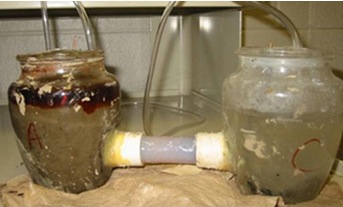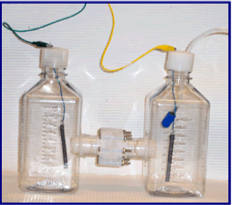Bacteria is used in a microbial fuel cell to convert organic compounds into electrons. The bacteria use the energy that they produce to grow and reproduce. A microbial fuel cell takes a portion of that energy in the form of electricity.
The bacteria live in the anode and change organic material into CO2, protons, and electrons. The fuel cell collects the electrons generated by the bacteria using a membrane, shuttle, or nano wires. The electrons move into the cathode through an electrical circuit. Protons are moved into the cathode through the membrane. This generates electrical power, Watts. The electricity current then leaves the cathode to be used or stored. [18]
Plans for making a fuel cell out of common materials can be found under tutorials at:
http://microbialfuelcell.org/ This is an external link.
Microbial Fuel Cells









Example of Student Projects



Back to SlugBot
![[1]](FuelCell_files/shapeimage_4.png)